
Know Your Chances
This book has been shown in two randomized trials to improve peoples' understanding of risk in the context of health care choices.
| 0 Comments | Evaluated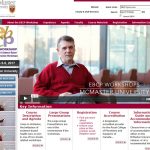
McMaster Evidence-Based Clinical Practice Workshop Resources – Therapy module
This is the therapy module resources provided to the attendees at the McMaster Evidence-Based Clinical Practice Workshop.
| 0 Comments
McMaster Evidence-Based Clinical Practice Workshop Resources – Systematic review module
The Systematic review module resources provided to the attendees at the McMaster Evidence-Based Clinical Practice Workshop.
| 0 Comments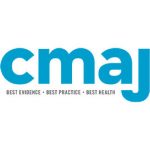
Basic statistics for clinicians: 1. Hypothesis testing
The statistical concepts of hypothesis testing and p values.
| 0 Comments
Basic statistics for clinicians: 2. Interpreting study results: confidence intervals
Interpreting study results: confidence intervals.
| 0 Comments
Basic statistics for clinicians: 3. Assessing the effects of treatment: measures of association
Assessing the effects of treatment: measures of association.
| 0 Comments
The interpretation of clinical trials
Peter Greenberg’s 9-minute read on the interpretation of clinical trials.
| 0 Comments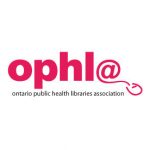
Critical Appraisal of Research Evidence 101
Ontario Public Health Libraries Association guide to critical appraisal of research evidence.
| 0 Comments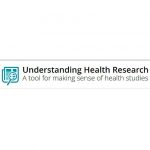
Understanding Health Research, a tool for making sense of health studies: use of statistics
In health research, researchers typically use statistics to determine statistical significance and effect size.
| 0 Comments
Understanding Health Research: A tool for making sense of health studies
An interactive online tool designed to help anybody to understand scientific health research evidence.
| 0 Comments
Reading the Medical literature
American College of Obstetricians and Gynaecologists (ACOG) introduction to critical appraisal and evidence-based medicine.
| 0 Comments
University of Western Australia: Bias Minimisation, randomisation and blinding
University of Western Australia’s explanation of why random allocation to comparison groups and blinding (if possible) are important.
| 0 Comments
Evaluating relevance
How to evaluate relevance of research in Michigan State University’s Evidence-Based Medicine Course.
| 0 Comments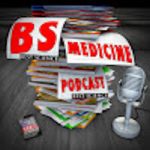
Evidence-Based and Shared-Informed Decision-Making According to Homer (Simpson)
With help from Homer Simpson, James McCormack uses a 17-minute slide cast to explain the principles of thoughtful treatment.
| 0 Comments
‘Tricks to help you get the result you want from your study (S4BE)
Inspired by a chapter in Ben Goldacre’s ‘Bad Science’, medical student Sam Marks shows you how to fiddle research results.
| 0 Comments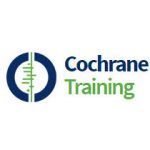
The Princess and the p-value
An interactive resource introducing reporting and interpretation of statistics in controlled trials.
| 0 Comments
Sampling error, the unspoken issue behind small number changes in the news
Ben Goldacre stresses the importance of taking account of “sampling variability” and confidence intervals.
| 0 Comments
Critical appraisal
University of New South Wales Medical Statistics Tutorial 4 addresses Critical Appraisal.
| 0 Comments
Probability and tests of statistical significance
University of New South Wales Medical Statistics Tutorial 6 addresses ‘Probability and tests of statistical significance’.
| 0 Comments
Quantifying uncertainty in treatment comparisons
Small studies in which few outcome events occur are usually not informative and the results are sometimes seriously misleading.
| 0 Comments
Critical appraisal of clinical trials
Slides developed by Amanda Burls for an interactive presentation covering the most important features of well controlled trials.
| 0 Comments
GenerationR – The importance of involving children and young people in research
3/3, 22-min video at the launch of GenerationR, a network of young people who advise researchers.
| 0 Comments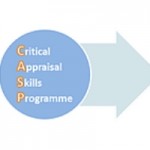
Clinical Significance – CASP
To understand results of a trial it is important to understand the question it was asking.
| 0 Comments
Making sense of results – CASP
This module introduces the key concepts required to make sense of statistical information presented in research papers.
| 0 Comments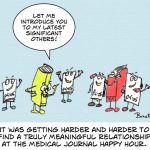
Significant Others
Statistical significance does not always mean meaningful or practical significance.
| 0 Comments
False Precision
The use of p-values to indicate the probability of something occurring by chance may be misleading.
| 0 Comments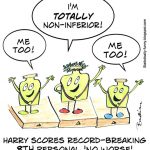
Personal “No Worse”
People with vested interests may use misleading statistics to support claims about the effects of new treatments.
| 0 Comments
P-values and the role of chance
Gilbert Welch’s 10-min video on p-values and assessing the likelihood that a difference between treatments is due to chance.
| 0 Comments
Mixed Messages about Statistical Significance
A webpage explaining the difference between statistical and practical significance.
| 0 Comments
Statistical Significance and Practical Significance
Keith Bower’s 3-min video discussing the difference between Statistical Significance and Practical Significance.
| 0 Comments
Type I and Type II errors, and how statistical tests can be misleading
Gilbert Welch’s 12-min video explaining Type I and Type II errors, and how statistical tests can be misleading.
| 0 Comments
Methodology of clinical trials
Eurordis training on the methodology of clinical trials for representatives of patients’ organisations.
| 0 Comments
Reporting results of studies
Dr Chris Cates' article discussing how to report study results, with emphasis on P-values and confidence intervals.
| 0 Comments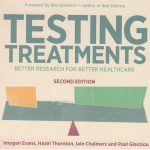
3: Statistics are confusing – should patients really have to look at the numbers?
The way that numbers are presented can be very daunting – or even downright misleading. But if you really do […]
| 1 Comment
What does “statistically significant” mean?
‘To be honest, it’s a tricky idea. It can tell us if the difference between a drug and a placebo […]
| 0 Comments
What does a “significant difference” between treatments mean?
Well, this is a trick question, because ‘significant difference’ can have several meanings. First, it can mean a difference that […]
| 2 CommentsNo Resources Found
Try clearing your filters or selecting different ones.
